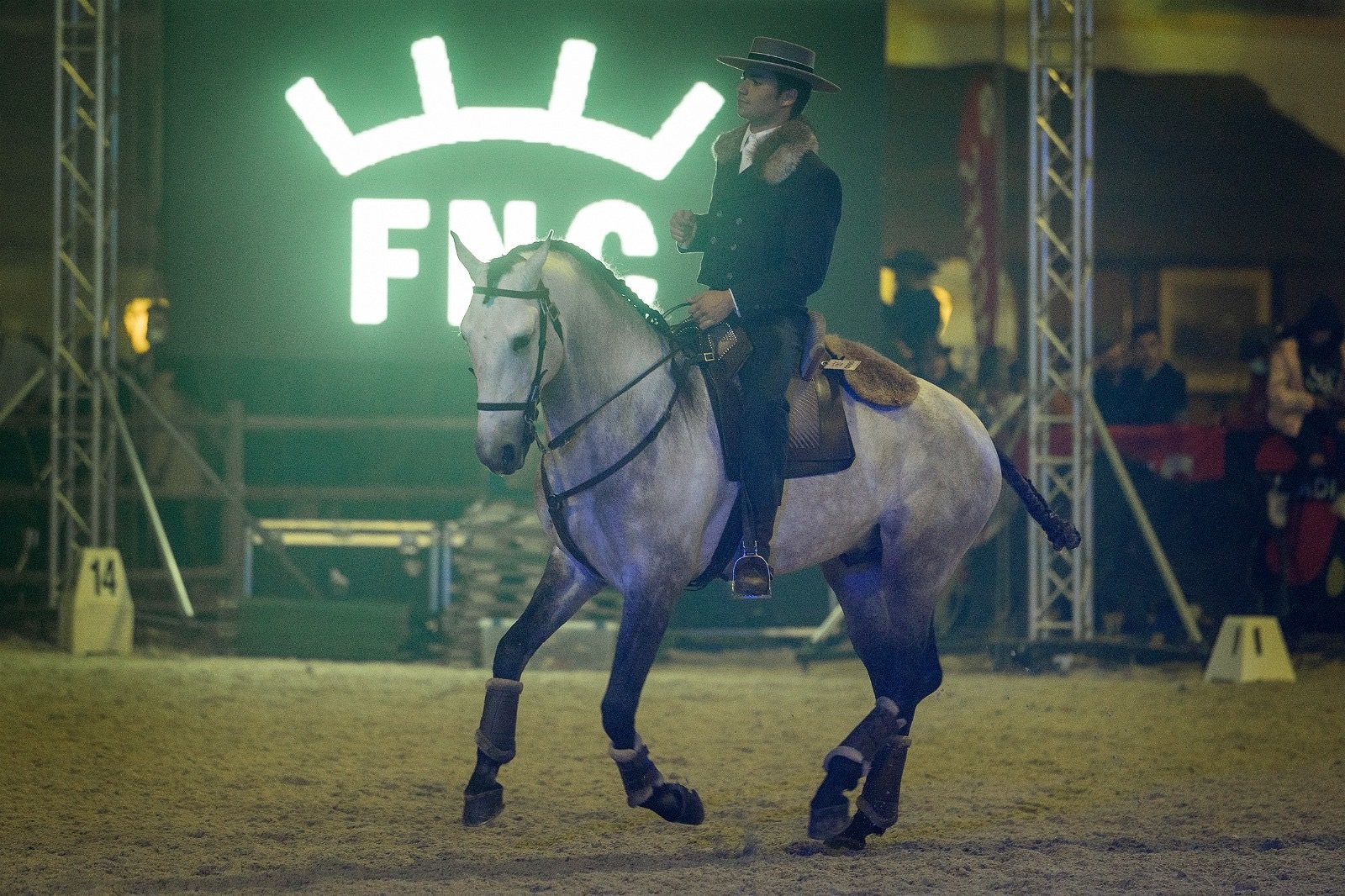
What is
Working Equitation?
Working Equitation is a competitive equestrian sport that showcases the horse and rider's versatility, precision, and partnership. Originating from traditional ranch work in Southern European countries like Portugal, Spain, and Italy, it tests the horse's ability to remain calm, focused, and responsive while performing tasks similar to those encountered in real-life fieldwork, with dressage-style riding.
Working Equitation competitions consist of four phases, each designed to test the horse and rider's skills and abilities
-

1. Dressage
Horse and rider demonstrate their control, balance, and precision through various gaits and transitions in a predetermined sequence of movements.
Competitors are judged on how smoothly and accurately each movement is executed. -
2. Ease of Handling
Competitors must navigate a fixed course of obstacles, including as gates, bridges, and barrels, that simulate the challenges encountered in ranch/fieldwork. The more effortless it looks, the better it is scored by the judge.
-

3. Speed
In this phase, horse and rider are required to complete a fixed course of obstacles as quickly as possible while still maintaining accuracy and control.
-

4. Cow Phase
Often optional at shows, competitors must demonstrate their ability to work with cattle, such as separating or guiding, and eventually penning the selected cow.
Working Equitation is a growing sport around the world and has several national and international competitions, including a World Championship that occurs every four years. It is an exciting and challenging sport that requires a high level of horsemanship, athleticism, and teamwork between horse and rider.
Come and discover more about it with LusoWest in a fun, challenging manner. We can’t wait to welcome you!
Visit USAWE for more details about the sport.


